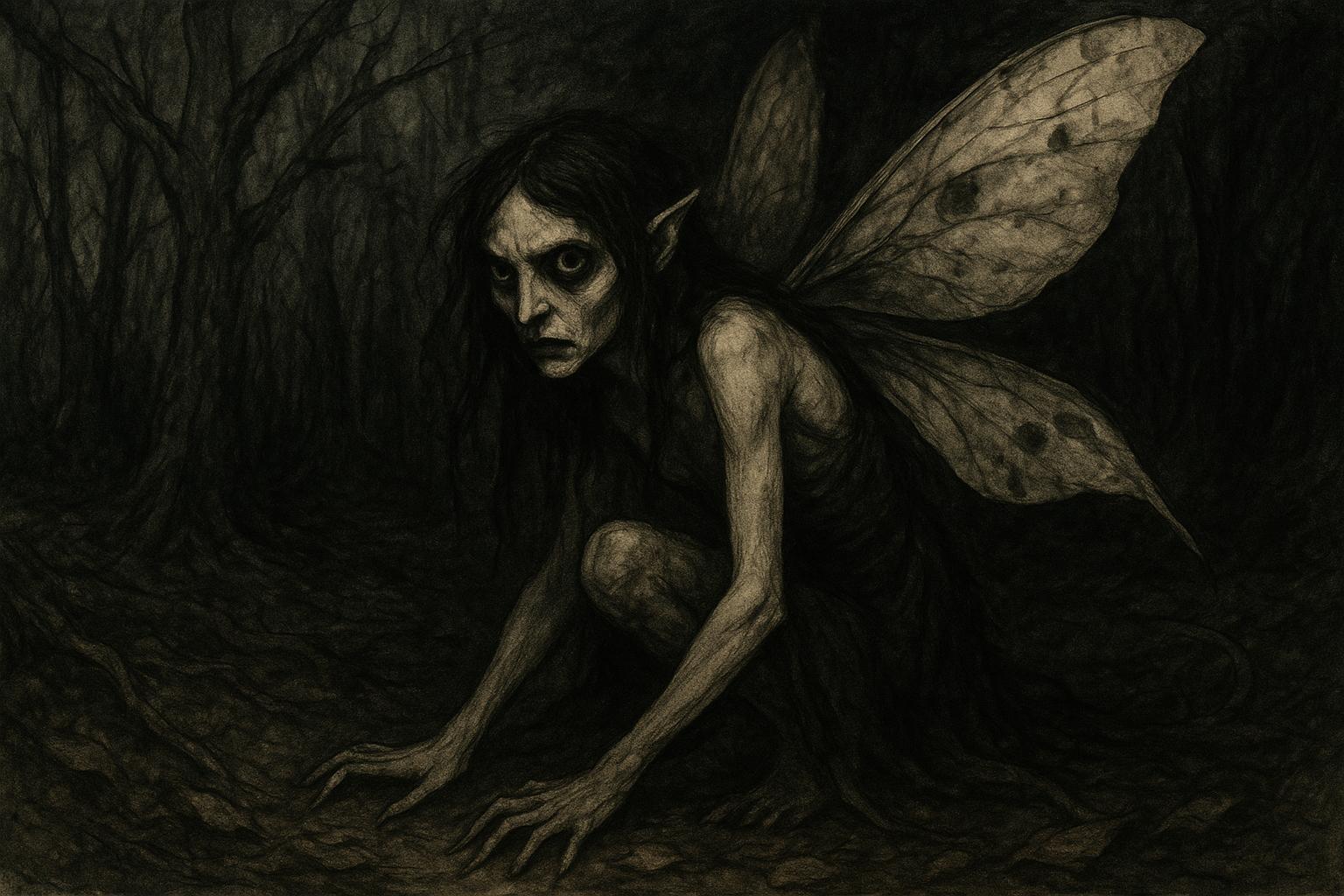The Dark Origins of Fairies in Folklore

The Dark Origins of Fairies in Folklore
Fairies, often imagined today as benevolent and whimsical beings, have a much more complex and darker history in traditional European folklore. Their roots are deeply embedded in the mythologies of various cultures, each contributing unique stories and characteristics that reflect both the fears and values of past civilizations.
Origins in Celtic Tradition
In Celtic mythology, fairies were far removed from the tiny, gentle creatures seen in contemporary culture. They were formidable, supernatural entities existing in an alternate realm known as Annwn or the Otherworld. These entities, referred to as the Sidhe in Irish lore, were believed to be vestiges of pre-Christian deities, encompassing a range of qualities from benevolent to malevolent. Often, these creatures held power over human fate and were not to be taken lightly.
Fairies as Deceptive Spirits
Across European folklore, fairies had a reputation for being tricky and unpredictable. Their mischievous nature often caused trouble for humans, with tales of people being led astray or enchanted under their influence. The belief in changelings was particularly pervasive; these were fairy impostors replacing human children, a notion frequently used to explain mysterious illnesses or developmental issues in medieval society. This gave fairies a dual nature: they could be helpful, but they could also be dangerous, adding a layer of complexity to their character.
The Influence of Christianity
The spread of Christianity introduced a significant reinterpretation of fairy mythology. The Church frequently depicted fairies as aligned with the demonic or portrayed them as fallen angels who were neither sinful enough for Hell nor virtuous enough for Heaven. The fairy realm became a symbol of moral ambiguity, a lingering memory of pagan beliefs suppressed by emerging Christian doctrine. This transformative period altered how people perceived fairies, weaving them more tightly into the moral landscape of the time.
Regional Variations
While Celtic stories greatly influenced the understanding of fairies, other regions had their interpretations that added depth to this mythological tapestry:
Norse Mythology: In Norse tradition, the Huldufólk, or hidden people, were said to inhabit rocks and mounds. These fairies were secretive and often hidden from human view, preserving the enigmatic nature associated with fairy lore.
Slavic Folklore: The Vila from Slavic stories were often thought to seek vengeance against those who crossed them. They were frequently associated with the natural elements and had the power to shapeshift, showing the diverse capabilities attributed to fairy beings.
Germanic Traditions: Germanic cultures introduced the Weisse Frauen, mysterious female spirits linked with nature. These fairies were seen as protectors of the forest but also as ominous figures if disrespected or provoked by humans.
Each regional variant contributed unique attributes and legends, enriching the narrative and illustrating the evolving perceptions of fairies through centuries.
The Evolution of Fairy Representation
The transition from fearsome supernatural beings to the delicate figures of modern fairy tales is largely due to cultural shifts over time. These changes reflect the evolving societal values and understanding of natural and supernatural worlds. Historically, fairies provided a framework to comprehend unexplained phenomena, whether concerning human misfortune or carrying a moral lesson about respect for nature and the unknown.
A Reflection of Past Societies
Fairy tales and folklore serve as a mirror, reflecting the societal norms and fears of the times in which these stories were told. In times of uncertainty or fear of the unknown, stories of fairies provided explanations and conveyed cautionary tales. Fairies often served as symbols of nature’s unpredictable and untamable force, reminding humans of their vulnerability and the limits of their understanding.
The Role of Imagination and Belief
The enduring fascination with fairies underlines the power of imagination and belief systems in shaping cultural narratives. Despite their frightening origins, fairies offered a sense of wonder and an escape from the mundane realities of life. They spurred creativity and storytelling, allowing communities to pass down important societal messages through enchanting tales.
Modern Interpretations and Legacy
In contemporary culture, fairies have undergone a sanitization, often depicted as gentle creatures imparting wisdom or granting wishes. This shift not only reflects a change in how societies address the unexplained but also illustrates a move toward romanticizing the supernatural. Today’s popular culture preferences in depicting fairies as charming and kind creatures represent a departure from their original, darker mythologies.
The journey of fairies from formidable spirits to delightful icons of modern tales encapsulates a broader historical transformation—a testament to the changing human connection with nature and the supernatural. By revisiting these dark origins, one achieves a deeper understanding of historical perspectives and the fascinating cultural shifts that have shaped our modern-day storytelling.
Comments are closed.
Comments on 'The Dark Origins of Fairies in Folklore' (0)
Comments Feed